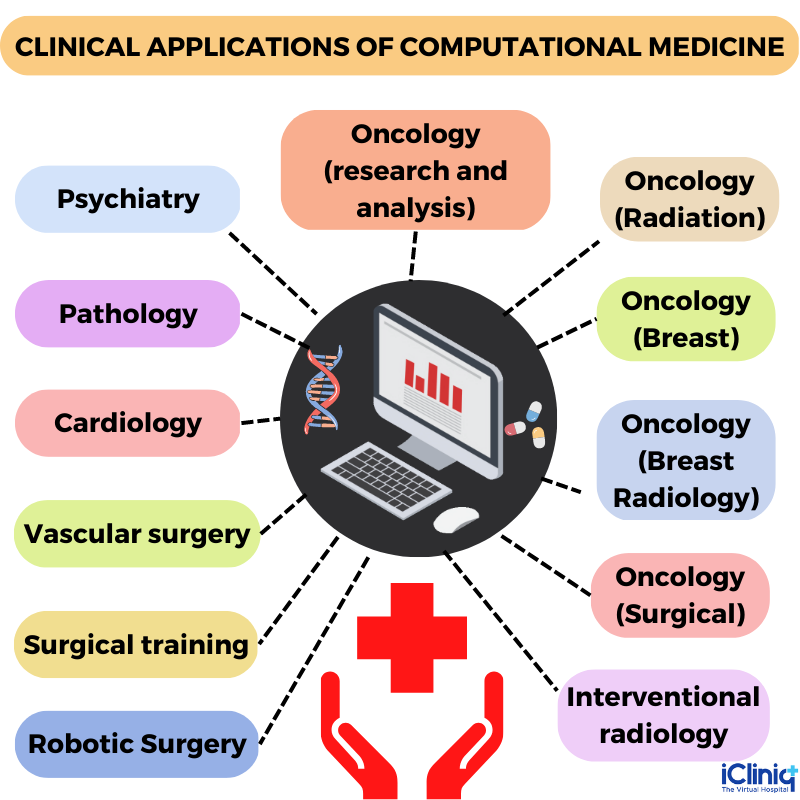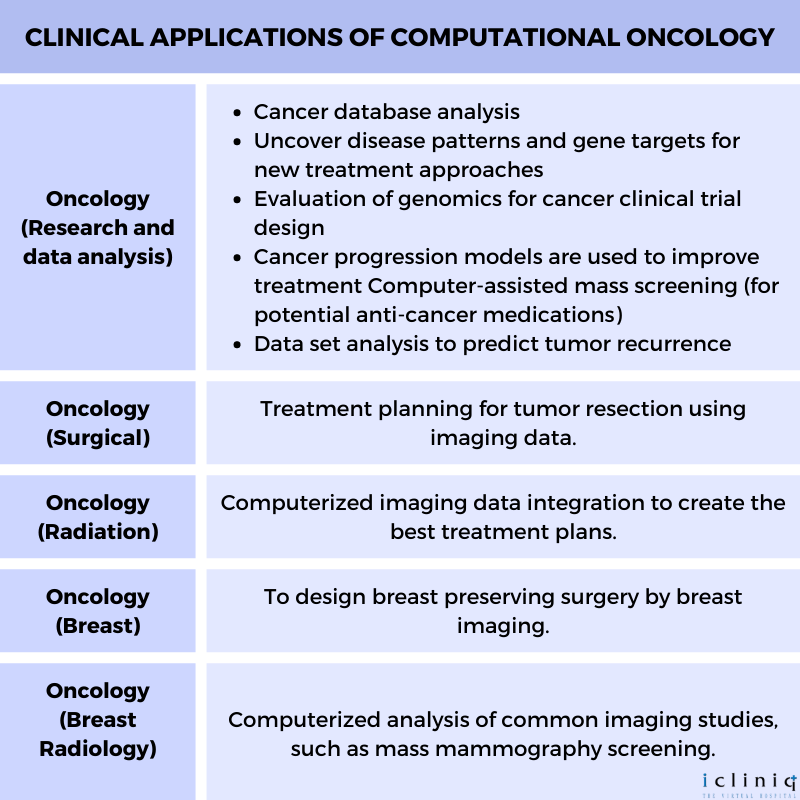Introduction:
Computational oncology is a relatively new branch of medicine that is gaining traction rapidly. This branch encapsulates the complexities of healthcare, particularly oncology. Nowadays, a lot of effort is being devoted to establishing how cancer arises and how to eradicate it from the body. The more information obtained, the higher the prospects of developing long-term solutions.
-
Computational oncology is concerned with the molecular elements of cancer.
-
It utilizes mathematics and computational methods to organize tumor marker profiles, the developmental pathways, the biology of tumors, and bioinformatics and constructs prediction models for therapies based on this information.
-
It uses computers for mass screening, specific cancer cell modeling, and the development of tumor marker analysis for precision therapy.
-
This information helps to anticipate certain medications or treatment techniques that will deliver a long-term remedy for a cancer patient.
What Is the Aim of Computational Oncology?
-
To link together research in the physical sciences and oncology.
-
To establish a solid mathematical basis and communication standards.
-
To acquire knowledge of how physical principles regulate complex biological systems and advanced technologies such as nanotechnology and mathematical models.
-
To be able to create innovative medicines throughout the cancer spectrum.
What Are the Major Areas of Investigation in Computational Oncology?
Computational oncology has progressed rapidly and is growing along two parallel trajectories.
-
Data Collection And Analysis- In computational oncology, data gathering and analysis are carried out using advanced hardware and software. It investigates massive cellular pathways datasets to comprehend complex biological processes' interaction datasets. Computer-aided detection is used to analyze common imaging data, such as mammography and chest imaging to improve the accuracy and detection rate for population screening.
Data collection and analysis further include:
1. Cellular Pathways-
-
This database pathway helps to identify and search for proteins.
-
Following their identification, a molecular network is built by utilizing data from the pathway databases.
-
A model is then created and assessed using a modeling tool.
-
There are several tools available to conduct each of these operations, allowing the combination of data from diverse sources.
-
The three essential basic components of the cellular pathway include
-
Databases of pathways.
-
Tools for Annotations.
-
Tools for Simulation.
2. Microarray Analysis-
Microarray genomics compares expression data from normal tissue and malignancies to discover differentially expressed genes that may be useful in follow-up studies.
3. Imaging Analysis-
High-throughput screening (HTS) is an integrative system that uses photographs of living organisms as the fundamental unit to provide information on a wide range of reactions in both normal and pathological cells, including gene modifications and medication responses.
-
Tumor Models- The second main field of research utilizes computers to create complex mathematical models based on partial differential equations of particular cancer cells. They develop mathematical computer-based models of tumor development, metastatic spread, blood supply, and other factors to understand the physical growth of the tumor.
What Is the Justification for Oncology Research?
For many years, cancer therapy options have not progressed. The molecular markers are either unknown or less effective in establishing why some medicines only work in some patients but not others. As a result, further development is undoubtedly required.
Further advancements in cancer research may necessitate an altogether new and creative strategy. Thus, advances in computational oncology may foreshadow such a paradigm shift. The new notion of bringing together mathematicians, physicists, and oncologists to collaborate on a single issue has accelerated progress in computational oncology.
What Are the Obstacles in Computational Oncology?
Communication is a fundamental barrier to collaboration between scientists and the oncology community. The researchers must devise standard methods of communicating information between them. Future success in computational oncology will depend on tight collaboration between physicians and researchers to further increase knowledge about cancer by utilizing these new tools.
How Is Research Carried Out in Computational Oncology?
The aim of comprehending the underlying complexity of biological systems, along with advances in molecular biology and recent advances in computer power, has resulted in the growth of the area of computational medicine.
A research cycle will start with the identification of a problem and the application of computational techniques to simulate that problem. Based on modeling and systems analysis results, experiments can be devised and carried out once these preliminary results have been analyzed.
What Are the Clinical Applications of Computational Medicine?

Clinical Applications of Computational Oncology
Next-generation sequencing (NGS) has supplied a wealth of information about the human genome in healthy and sick cells; computational oncology departments can organize that information into a database that doctors and researchers may use more effortlessly to assist patients. According to the International Agency for Research on Cancer, there will be an increase of 23.6 million new cancer cases per year by 2030, compared to 14.1 million new cases in 2012.
Conclusion
Biological sciences methods have always been used in oncology research. The physical sciences and cancer now have a new interaction due to the emerging discipline of computational oncology. Thus, there will be new discoveries in the development and therapy of malignancies as a result of the application of physics and mathematics to cancer research.













